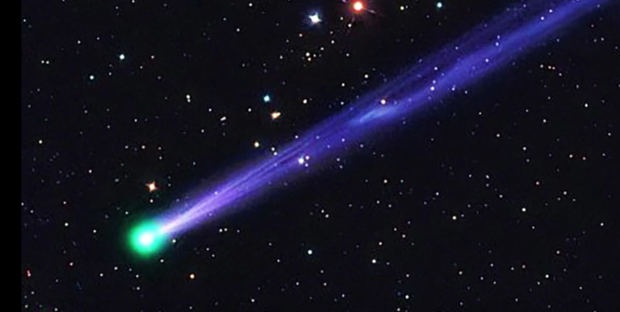A lunar eclipse starts everything off Friday night, as the moon passes into Earth’s penumbra, or outer shadow. The moon won’t be blacked out like in a full eclipse; only part of the moon will be shaded. The penumbral lunar eclipse, as it’s called, should be easily visible from much of the world.
Comet 45P, meanwhile, will zoom past Earth, coming within about 7.4 million miles of our planet, according to NASA. Its relative speed: 14.2 miles per second, or a breakneck 51,120 mph.
While still a safe distance away, this will be the closest approach of a comet in more than 30 years, according to the astronomy organization Slooh, which will offer a live stream of the comet’s flyby online starting at 10:30 p.m. EST Friday night.
The comet will appear the western sky, in the constellation Hercules. Binoculars and telescopes will help in the search, but at its closest approach it might even be visible with the naked eye, Slooh said.
Comets are basically snowballs of frozen gases, rock and dust. When a comet’s orbit takes it closer to the sun, it rises in temperature and releases dust and gas in the form of a huge, glowing head. Though they cannot support life themselves, comets may have brought water and organic compound through collisions with Earth and other bodies in the solar system, according to NASA.
Stargazers have been tracking Comet 45P for the past few months. The ice ball, known as a periodic comet, comes around every five years.
Source: http://cbsn.ws/2vTCMmg











